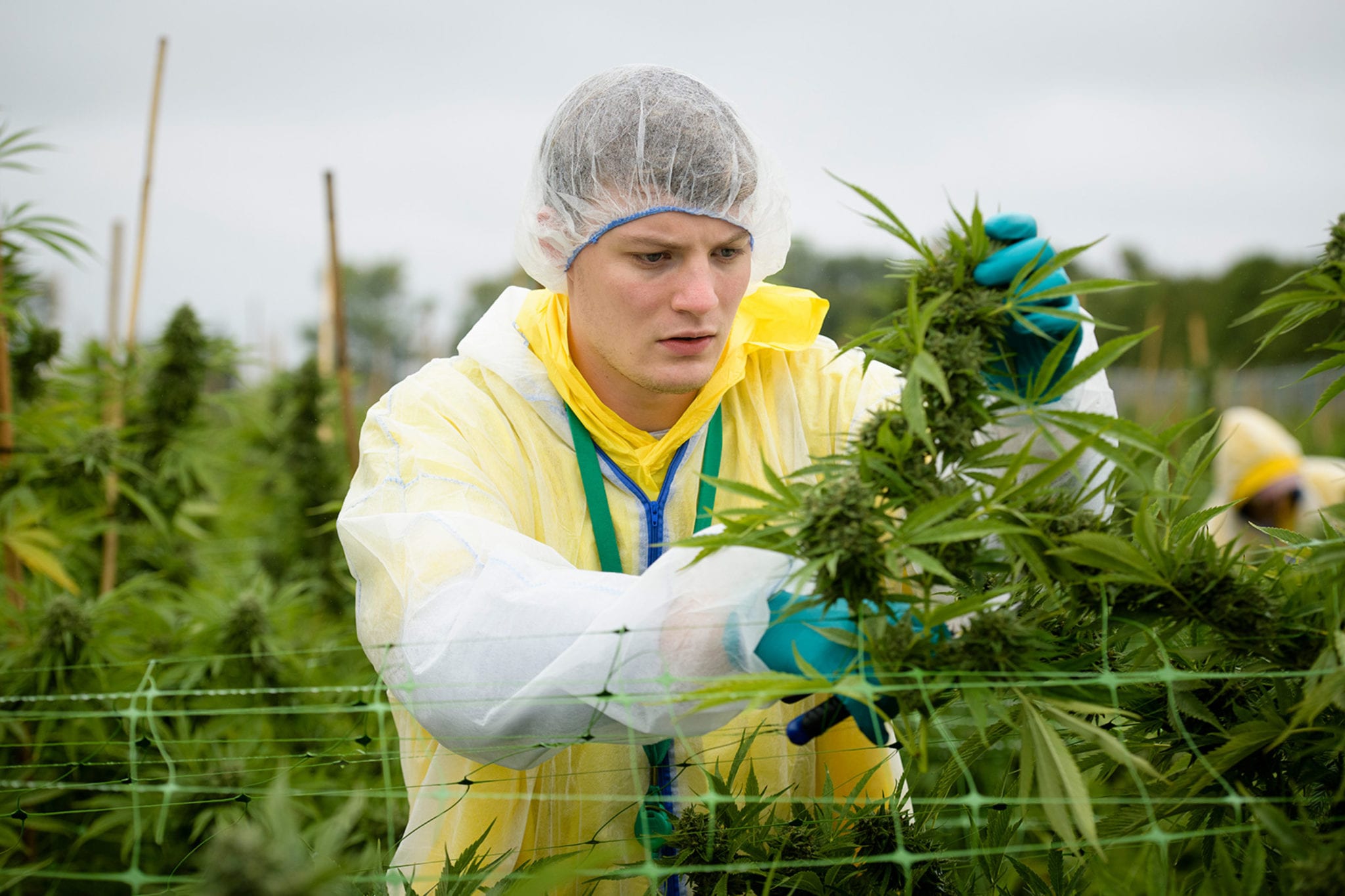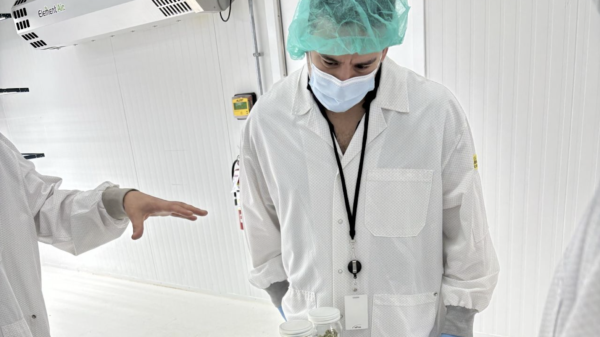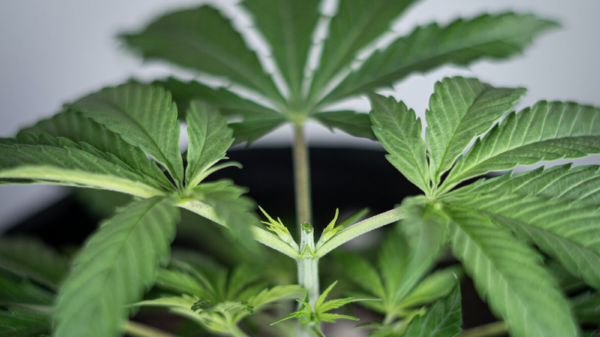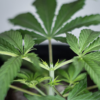As a tsunami of legal outdoor weed floods drying rooms across Canada, experts warn that existing supply gluts, falling prices and a resilient black market means much of the incoming low-cost harvest will go up in smoke.
With hundreds of thousands of kilograms of licit cannabis locked up in vaults for months, an ongoing country-wide supply glut has already caused billions of dollars of assets and inventory to be written down or destroyed. And a delayed rollout of cannabis 2.0 products created an oversupply of bulk resin that’s put significant pressure on wholesale prices for low-quality biomass and trim.
At the same time, almost every large-scale indoor producer is offering $4-a-gram value product in an effort to offload Canada’s mountain of mid-grade bud.
“The market is like a full bathtub that’s not only overflowing with volume, but all the pipes are full underneath the bathtub. Everything’s already too full,” says Craig Wiggins, managing director at The Cannalysts. “And with outdoor growers, they’re going to dump a bunch of buckets into a full bathtub?”

An estimated 360,000 of outdoor legal weed is expected to be harvested in Canada in 2020. Photo via WeedMD
At the start of planting season in June, Health Canada had licensed 1,200 acres of outdoor growing area, almost triple the 450 acres approved last year. The BCMI Cannabis Report projects that amounts to around 360,000 kilograms for this year’s harvest, based on 2019’s yield per acre and assuming all outdoor producers planted full, healthy crops.
Read more: Outdoor cannabis licences almost double
With production costs as low as 5 cents a gram, prevailing wisdom in the industry has been that outdoor could significantly disrupt Canada’s cultivation landscape. An incoming ocean of outdoor would drastically lower prices for all types of finished product, causing more shutdowns of costly indoor facilities.
But Wiggins says many of the 50 or so outdoor growers will end up selling their crop for a lot less than they planned a year or two ago, when they were applying for licences and building their farms. He fears some won’t even be able to give their crop away, causing further write downs, destruction of product and a washout of outdoor players.
“Unfortunately, I don’t see this ending well for the for the outdoor grower,” he told Mugglehead over the phone.
‘Fake wholesale market’ and ‘artificial price floor’ spell trouble outdoors
Outdoor farmers should have realized in 2019 that the wholesale prices for extract-grade cannabis — up to $2.50 a gram — were grossly inflated, Wiggins says.
The Cannalysts, he explains, were the first to report last year that larger indoor producers were artificially jacking up wholesale prices by selling big bags of biomass to extractors, then buying back the bulk resin and selling it again to inflate their financials.
In May, Toronto-based producer Cronos Group Inc. (TSX: CRON) revealed it spent more money restating three previous quarterly financial reports, due to alleged double counting, than its total revenue over the period of the restatement.
Read more: Cronos continues to underwhelm in Q1, warns Covid-19 will hamper sales
“So there was this whole fake wholesale revenue market from 2019 that will not exist this year, because people like us have pointed fingers at the practice of inflating sales,” Wiggins says.
The analyst notes wholesale prices have since collapsed below $0.50 a gram and continue to fall.
And what about outdoor growers looking to sell their crop directly to the dried flower market?

Current Canadian cannabis market average prices will not only disqualify smaller growers, but make it hard for outdoor producers to enter the retail market. Graphic via Tantalus Labs
Wiggins says they face another set of unique “Canadian-made” industry problems.
First, they have to win contracts with provincial distribution boards, which takes months, and almost no smaller player has established yet.
Second, they’ll have to compete with the industry’s “artificial price floor” that’s been set by factoring in excise taxes, retail and distribution margins, lab testing, packaging and shipping.
Because outdoor flower will have to compete with large indoor LPs with products retailing for $4 a gram, that price floor will make it almost impossible for outdoor growers to turn a profit. Not only will they have to drop their prices due to outdoor’s lower “bag appeal,” but they’ll need enough scale to cover their selling, general and administrative costs as well as growing expenses.
“So, it’s going be really tough for outdoor flower to get on the shelf in any sizable weight against what’s out there right now,” Wiggins says.
Farmers eye vertical integration
Despite all those troubling economic factors, outdoor growers are still drawing splashy headlines for their massive incoming “Croptober” harvests.
British Columbia-based SpeakEasy Cannabis Club Ltd. (CSE: EASY) told CBC News last month that it started chopping down and processing a crop expected to yield 70,000 kilograms.
Founder Marc Green said much of the weed grown on his Rock Creek farm will be earmarked for the dried flower market.
But the company hasn’t sold any substantial volume to date, and without provincial distribution contracts it’ll be impossible to get all that weed to market, Wiggins argues.
Wiggins highlights how Aphria Inc. (TSX: APHA) — Canada’s top-selling producer by market share — moved 55,000 kilograms in the last 12 months. And that’s with the company being totally vertically integrated, with sticky brands as well as professional sales and distribution teams behind it.
“So for a company like Speakeasy, how do you go from a standstill to warp drive? It’s impossible,” he says.

Some experts says SpeakEasy Cannabis Club’s 70,000-kilogram outdoor harvest smells like a stock-promotion play. Press photo
Mugglehead asked Speakeasy about their sales strategy, but didn’t get a response before press time.
Chris Damas, managing editor of the BCMI Cannabis Report, says the news report smells like a stock promotion for Speakeasy.
The 38-year commodities veteran says he was the first to predict oversupply issues in the Canadian market back in 2017.
He fears for the longevity of smaller outdoor players.
“A lot of people are going to get a very quick and harsh lesson in commodities, because when the market is already very oversupplied, there’s not even going to be a bid for this stuff,” he says.
A large portion of this year’s Croptober supply will be extracted and stored as oil, which has over a one-year shelf life.
On Oct. 14, Speakeasy said it received a licence amendment for a processing facility on its farm.
By becoming vertically integrated the company plans to turn its outdoor weed into high-value products like vapes and edibles at “extremely competitive” prices.
However, Damas notes the 2.0 market is still only in the eight-figures range with sales only starting to increase — sales almost exclusively recorded by Canada’s larger producers that have been producing derivative products for a year now.
“Deloitte projected last year that the 2.0 market would be $2.7 billion, but I thought that number was just pulled out of the sky,” he says.

WeedMD is set to launch new vape products into Canada’s recreational and medical markets under its Color and Starseed brands. Press photo
For Damas, the 2.0 segment was being falsely compared to mature U.S. markets like Colorado and California, where extract-based products like vapes and gummies make up almost half of monthly sales. While both states see droves of weed tourists, Canada has two provinces that have banned the sale of 2.0 products.
Despite growing pains north of the border, there’s one segment Damas thinks has legs: vapes.
With bulk resin in oversupply, he sees the vape market as next to fall to commodity pricing.
“You’re going to be able to get a $19.95 vape cart and the $49.95 vape carts are going to be gone,” Damas says. “So, I think as vapes come down in price there’s going to be a big market for them.”
Bigger outdoor players need bigger 2.0 sales
WeedMD Inc. (TSX-V: WMD) said earlier this month it partnered with Pax Labs, Inc. to launch new vape products across Canada in both medical and recreational markets through established supply agreements.
The company is among three publicly-traded outdoor producers — including 48North Cannabis (TSX-V: NRTH) and Aleafia Health (TSX: ALEF) — with significant harvests last year.

WeedMD’s head cultivator Curtis Wallace stands in front of high-CBD cultivars, which make up 30 per cent of the company’s 2020 harvest at its 27-acre field in Strathoy, Ontario. Submitted
WeedMD head cultivator Curtis Wallace said the company learned many important lessons from 2019 when the Toronto-headquartered company harvested 8,000 kilograms at around $0.16 per gram at its 27-acre licensed facility in Strathoy, Ontario.
By beefing up its industrial harvesting equipment, WeedMD was able to reduce staff and harvest bigger plants this year, even with some early frost. The company also went from 38 cultivars to seven, which includes a high-CBD cultivar called ACDC that made up 30 per cent of the field.
While some of the the outdoor crop will be sold as pre-rolls and ready-to-roll products, Wallace said the majority will be extracted in-house to support the firm’s 2.0 strategy.
In August, it landed a supply contract with Fire & Flower (TSX: FAF) to manufacture the retail chain’s new Revity CBD line, a deal that Wallace says WeedMD is looking to duplicate.
WeedMD also secured a supply deal with U.S.-based cannabis topical brand Mary’s Medicinals. The company will lean heavily on its Color Cannabis and Saturday recreational brands as well as its Starseed Medicinal brand to drive 2.0 sales in Canada.
“We have a lot of different avenues here at WeedMD with in-house brands combined with Starseed that other companies don’t have,” Wallace said. “If you’re not vertically integrated, and have those years of experience, it’s going to make it much difficult for [smaller growers] to pivot their product lines based on market demand.”
From homegrown to diversion: other outdoor issues
For Damas, having distribution deals already with provinces is key for WeedMD to execute its 2.0 strategy. But the company’s recreational brands face fierce competition and account for less than 1 per cent of today’s market.
Cannalyst Wiggins points out that the three big outdoor LPs haven’t even offloaded last year’s crop: WeedMD sold around half, Aleafia appeared to sell inventory to themselves through alleged biomass swaps, and he’s still waiting on 48North to issue its second-quarter results on Oct. 30, noting it had only sold a tiny amount as of March 31.
With 516 total production licences issued, there’s just too much legal weed for Canadians to consume. In June, almost 45 million packaged cannabis products were held in inventory by producers, distributors and retails with only 8.6 million products being sold, according to recent data from Health Canada.
Further exasperating supply issues, both analysts highlighted how thousands of consumers will be cropping up to four plants in their backyards this month.
Damas points to StatsCan figures showing 650,000 daily users consume about 375,000 kilograms each year, and some of that volume accounts for personal grows, which cannibalize a portion of retail sales.
Took the corset off her as we get ready for chop.
G13 Blueberry Headband by Emerald Triangle
May 26-Oct 12. Preflower showed Aug 1 with flower stage Aug 10.
9 weeks of flower.
Thanks(giving) to @mollytime777 @dmacpher @ChimeraGenetics @Grow_Supplies for the advice pic.twitter.com/D8Ct7B7iv5
— GoBlueCdn (@GoBlueCdn) October 12, 2020
And don’t forget about the country’s still-thriving illicit market. As more legal players offer $99 ounces, underground dealers might double down and drop prices even lower.
With much of this year’s outdoor tidal wave not making it to store shelves, Wiggins wonders whether some product will be diverted into underground channels.
“Think about it: If you own a mid-sized company, you’ve got a couple million dollars in inventory in your vault that you can’t sell and you’re about to go personally bankrupt — there’s going to be pressure on diversion,” he says. “Desperate people do desperate things.”
Despite crashing cannabis prices and burdensome regulations, Adam Smith’s invisible hand will correct Canada’s troubled weed sector as it always does in free markets, Wiggins predicts.
“And if these outdoor companies are able to make it through to next year, they’ll have learned a big lesson: What doesn’t kill you, only makes you stronger.”
Top image via WeedMD
jared@mugglehead.com
@JaredGnam














